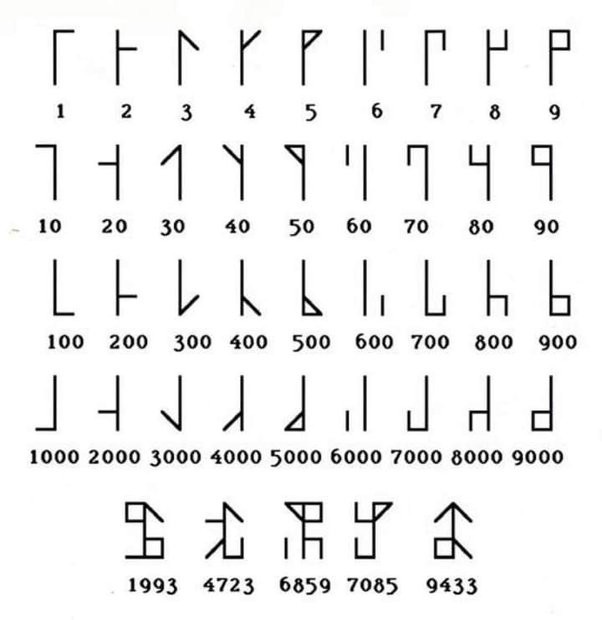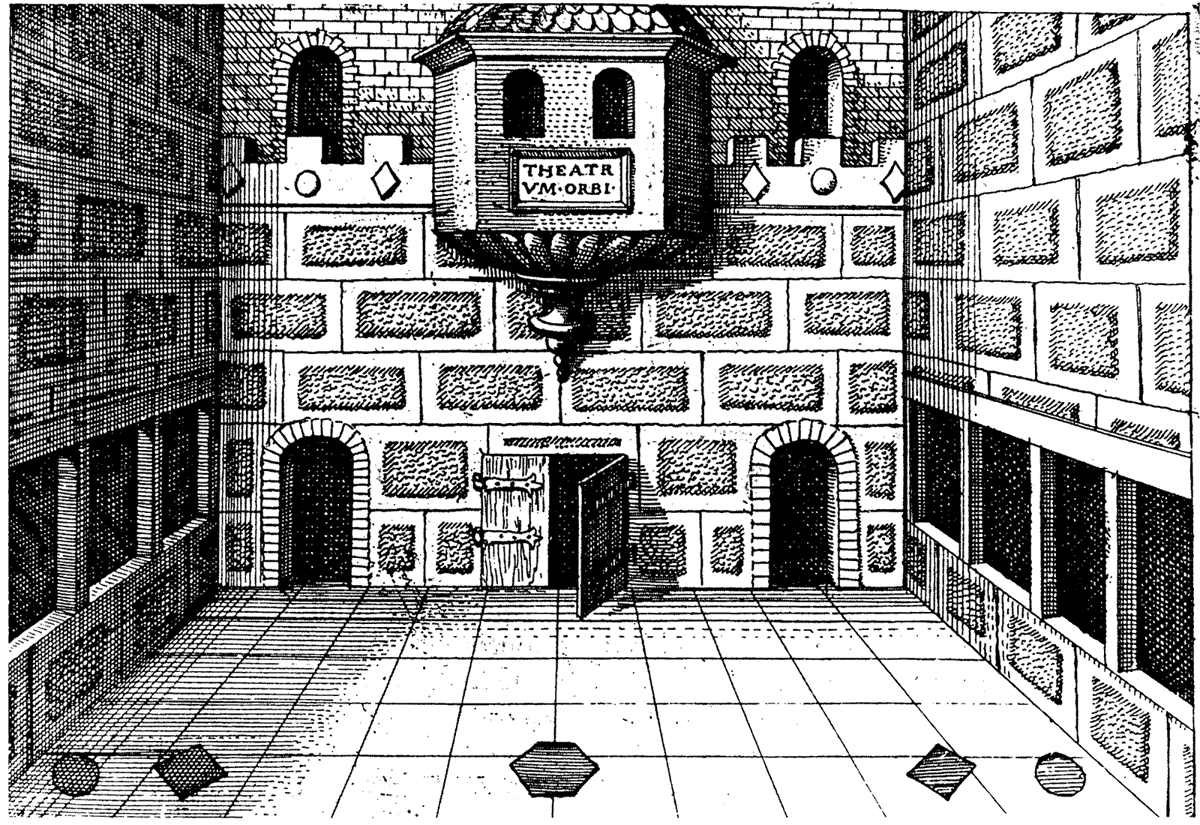
Cistercian numerals were invented by the Cistercian order of monks in the 13th century. Giuseppe Frisella explains how the notation system works:
A vertical straight line acts as an axis dividing the plane into four quadrants, each one representing one of the four digits: the upper right quadrant for the units, the upper left quadrant for the tens, the lower right quadrant for the hundreds, and the lower left quadrant for the thousands.
What this does well, indeed better than the roman or Arabic numeral systems it’s related to, is to represent both small and large numbers (1 up to 9999) in a single glyph. What it doesn’t do well, compared to roman or Arabic systems, is allow you to reduce operations on large numbers to operations on smaller ones. There’s no long division, in other words — and even addition and multiplication aren’t very straightforward.
So you might think about this as a kind of mathematical compression system, optimizing for storage rather than operations. If you just need to record a number — say, a four-digit year — you can do it quickly and in a minimum amount of space in the Cistercian system. If you need to do bookkeeping, then the Arabic numerals are probably what you want.
But if you’ve read this far, you’re probably thinking what I usually think anytime I encounter something a little strange in the world of mathematical notation — what about aliens? One can imagine an alien species that can easily do simple arithmetic operations on what they would call small numbers (less than 10,000) in their heads (or has offloaded such tasks to machine), and which would correspondingly value the storage and computational efficiency of a system of numbers like this. Maybe Cistercian numerals, rather than the clumsy digits of our intellectual infancy, will be the best way to make ourselves understood when first contact begins.
(Via Clive Thompson)
Update: Shelby Wilson has created an easy-to-use Cistercian numeral generator. (Via Alex Miller)

For monks, concentration wasn’t just a practical necessity, but a spiritual discipline. Consequently, they spent a lot of time thinking about the nature of distraction and how to fight it.
Sometimes [monks] accused demons of making their minds wander. Sometimes they blamed the body’s base instincts. But the mind was the root problem: it is an inherently jumpy thing. John Cassian, whose thoughts about thinking influenced centuries of monks, knew this problem all too well. He complained that the mind ‘seems driven by random incursions’. It ‘wanders around like it were drunk’. It would think about something else while it prayed and sang. It would meander into its future plans or past regrets in the middle of its reading. It couldn’t even stay focused on its own entertainment - let alone the difficult ideas that called for serious concentration.
That was in the late 420s. If John Cassian had seen a smartphone, he’d have forecasted our cognitive crisis in a heartbeat.
Actually, I can think of several other things John Cassian would have done if he had seen a smartphone, but let’s not get off track. Sure. He’d have figured out we’d have some problems.
Here’s a paradox: monks and nuns weren’t all about that austerity, at least cognitively. Instead, they’d go full tilt into embracing the wild, distracting powers of the mind, but trying to harness them for useful purposes.
Part of monastic education involved learning how to form cartoonish cognitive figures, to help sharpen one’s mnemonic and meditative skills. The mind loves stimuli such as colour, gore, sex, violence, noise and wild gesticulations. The challenge was to accept its delights and preferences, in order to take advantage of them. Authors and artists might do some of the legwork here, by writing vivid narratives or sculpting grotesque figures that embodied the ideas they wanted to communicate. But if a nun wanted to really learn something she’d read or heard, she would do this work herself, by rendering the material as a series of bizarre animations in her mind. The weirder the mnemonic devices the better - strangeness would make them easier to retrieve, and more captivating to think with when she ‘returned’ to look them over.
My favorite book about this is Francis Yates’s The Art of Memory; it’s more about the Renaissance than the height of the monastic period, but focuses on the history and artistry of these various mnemonic devices, while doubling as a kind of cultural history of the mind.







Stay Connected